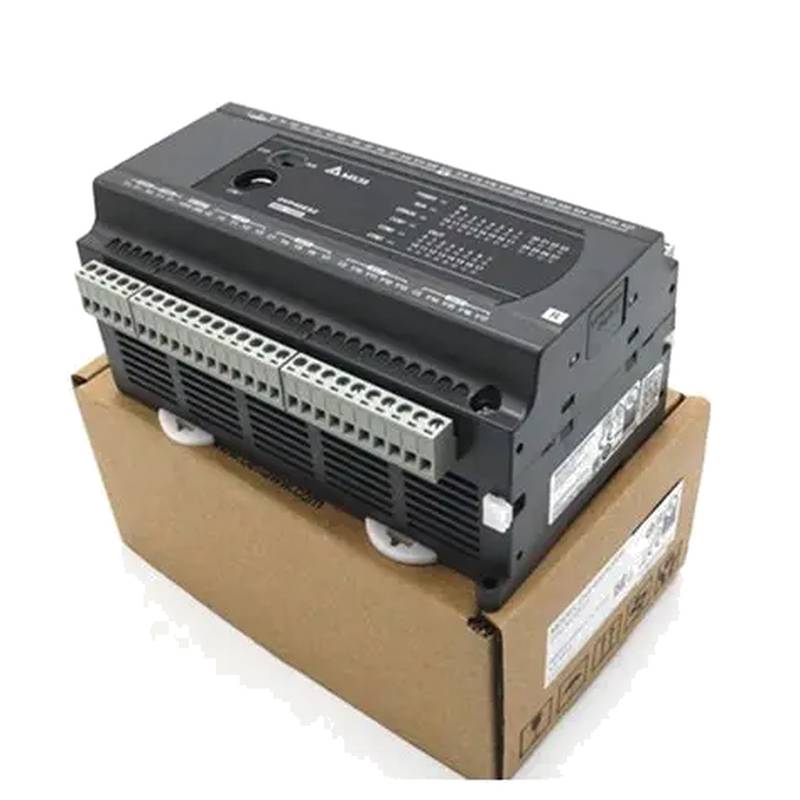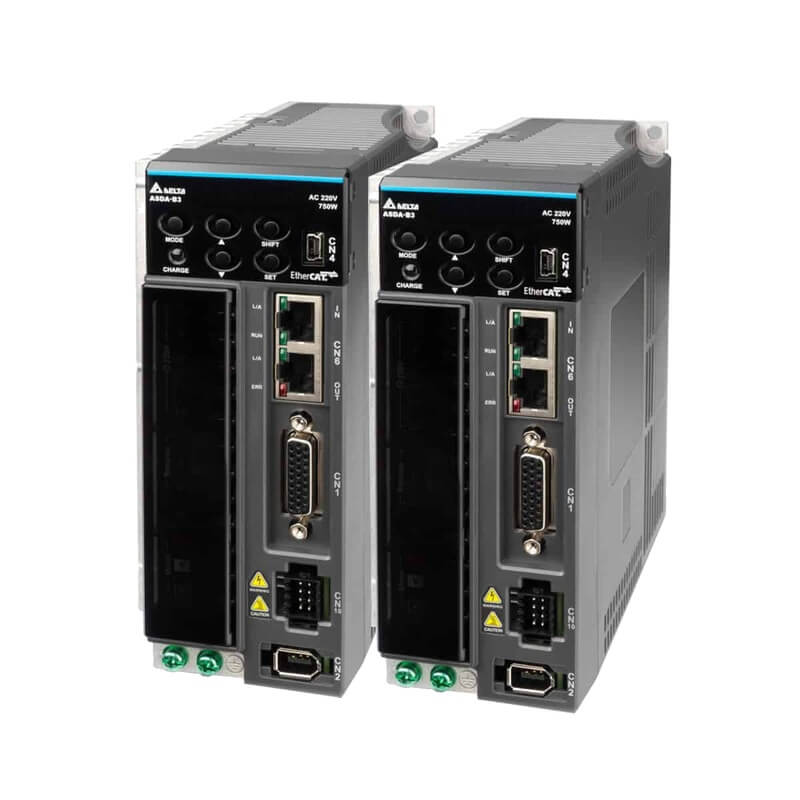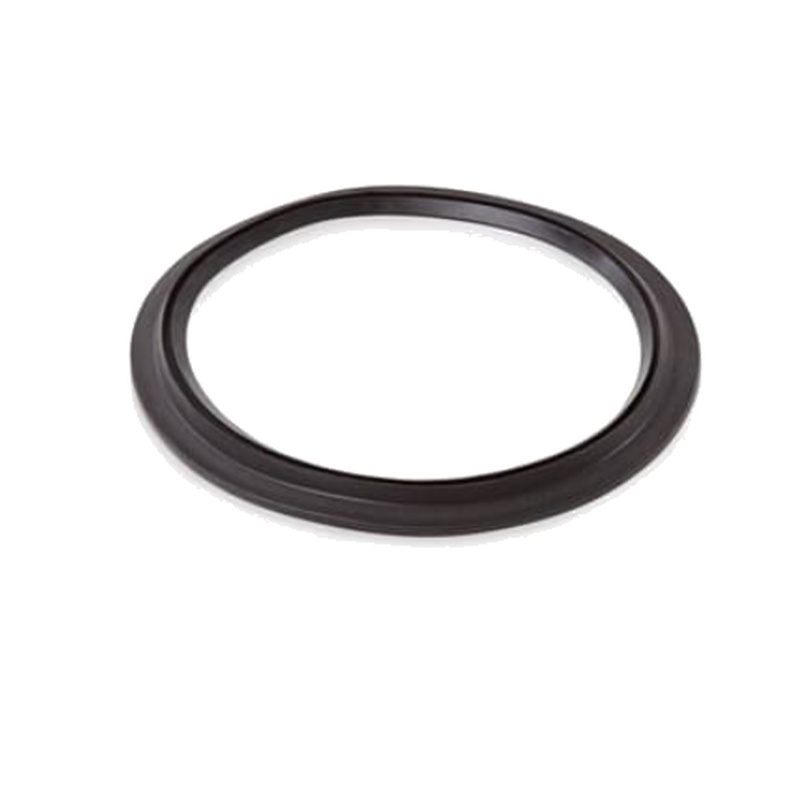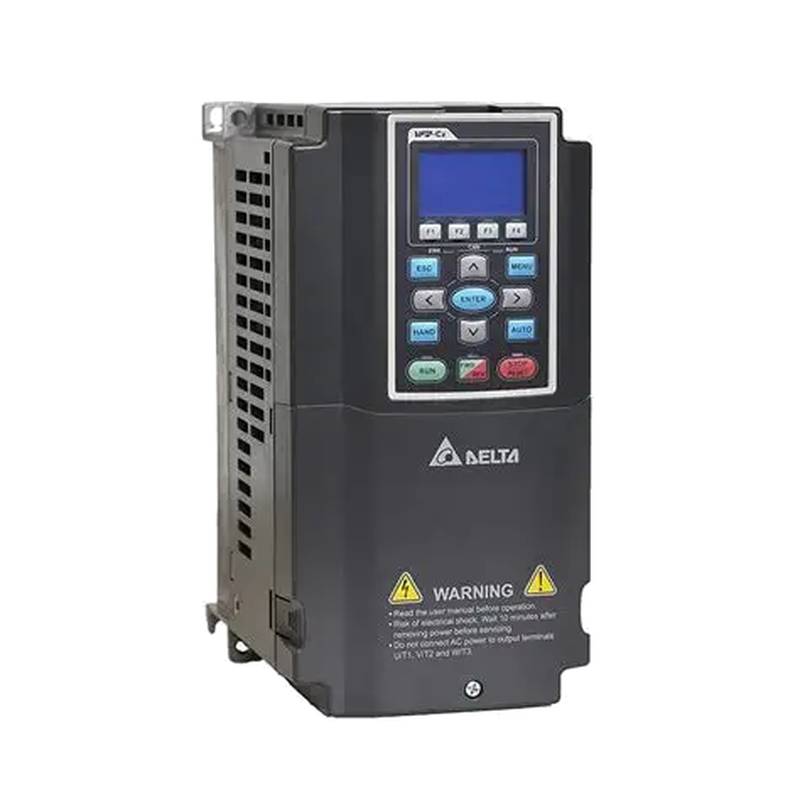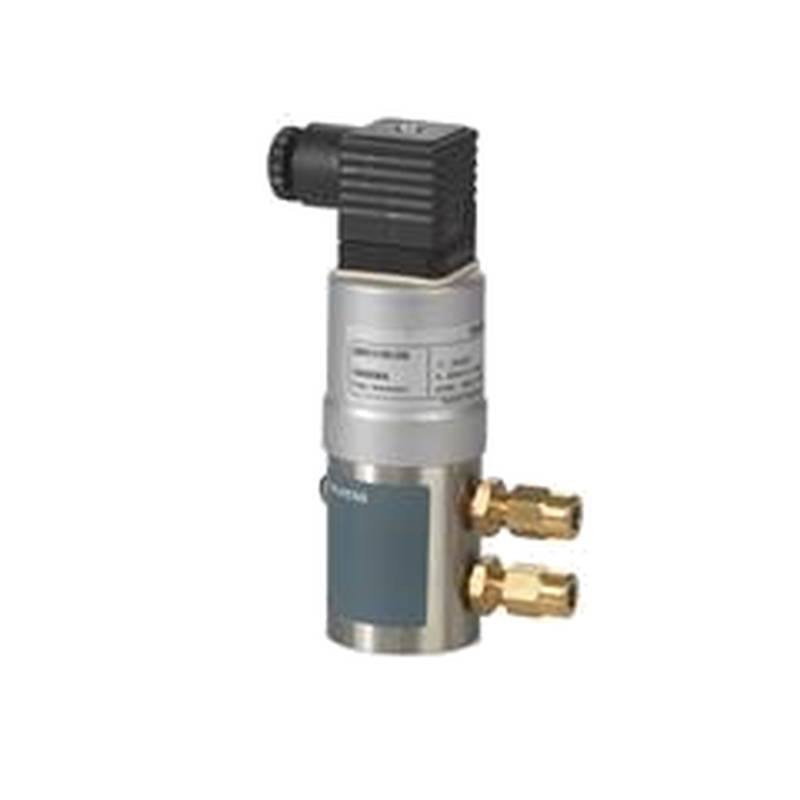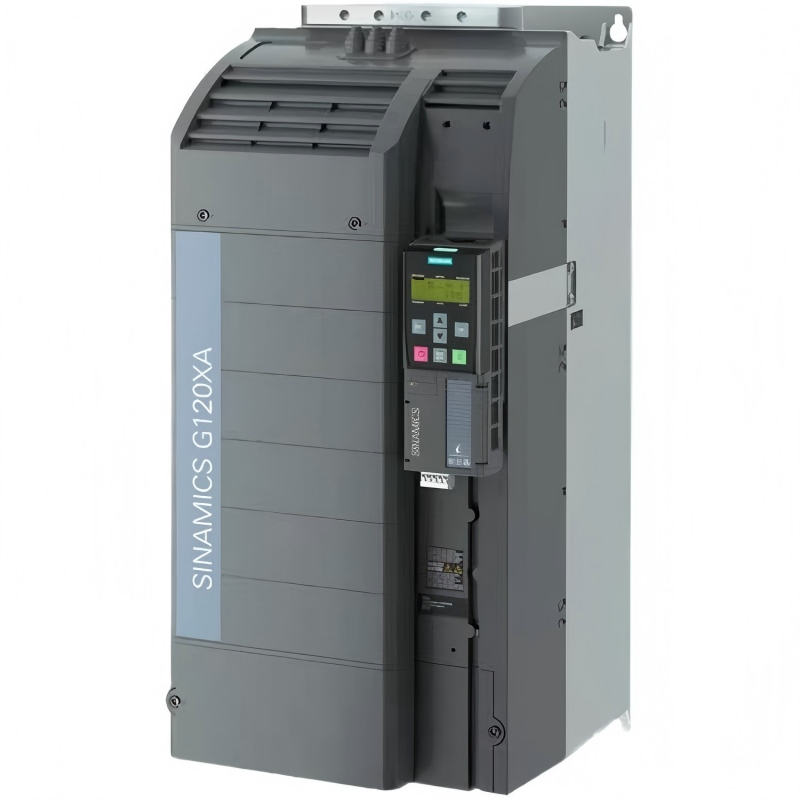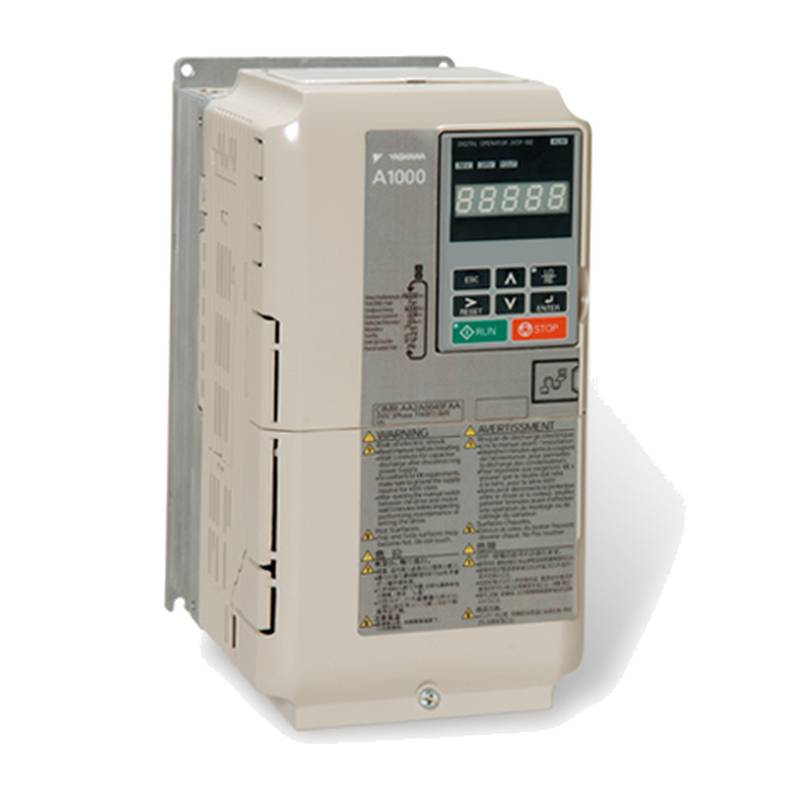
The Siemens 1FL6024-2AF21-1MH1 V90 Small Power High Inertia Servo Motor is engineered for precision motion control in demanding industrial applications, offering a compelling blend of performance, reliability, and ease of integration. This servo motor excels due to its high inertia design, providing superior stability and control for applications requiring precise positioning and smooth operation, even under significant load variations. Its core advantages lie in its robust construction, energy efficiency, and seamless compatibility with Siemens automation platforms, making it a go-to solution for sophisticated automation tasks. Key technical parameters include a rated power of 0.8 kW, a nominal torque of 2.54 Nm, and a high peak torque capability, ensuring robust performance across various operational demands. The motor operates with a nominal speed of 3000 rpm and features an IP65 degree of protection, signifying its suitability for challenging industrial environments.
Product Specifications
| Parameter | Value |
| :-------------------- | :-------------------------------------- |
| Motor Type | Servo Motor |
| Series | V90 |
| Part Number | 1FL6024-2AF21-1MH1 |
| Rated Power | 0.8 kW |
| Nominal Torque | 2.54 Nm |
| Peak Torque | 7.6 Nm |
| Nominal Speed | 3000 rpm |
| Rated Voltage | 400V AC |
| Enclosure Protection | IP65 |
| Inertia Type | High Inertia |
| Insulation Class | F |
| Ambient Temperature | 0°C to 40°C |
| Shaft Type | With key |
| Encoder Type | Incremental Encoder (1000 CPR) |
Core Features & Market Positioning
The Siemens 1FL6024-2AF21-1MH1 distinguishes itself in the competitive servo motor market through its "high inertia" characteristic, a critical differentiator for applications demanding exceptional stability and smooth rotational control. This design inherently dampens vibrations and improves the dynamic response, particularly advantageous in processes involving rapid acceleration and deceleration or where consistent torque delivery is paramount. Its integration within the broader Siemens Totally Integrated Automation (TIA) portfolio provides a significant advantage, enabling seamless communication and configuration with SINAMICS V90 drives and SIMATIC controllers. This ecosystem approach simplifies engineering, reduces commissioning times, and enhances overall system performance, positioning the V90 servo motor as a premium, yet accessible, solution for advanced automation. The motor's robust build quality and adherence to stringent industrial standards further solidify its reputation for reliability and longevity in harsh operational settings.
Key Application Scenarios
This high inertia servo motor is exceptionally well-suited for a variety of precision-driven industrial tasks. Its ability to maintain stable operation under fluctuating loads makes it ideal for packaging machinery, where consistent speed and torque are crucial for precise material handling and sealing operations. In the manufacturing sector, it finds application in CNC machining centers for complex contouring and high-accuracy milling, leveraging its smooth motion profile to achieve superior surface finishes. The textile industry benefits from its precision in automated fabric cutting and winding equipment, ensuring uniform tension and precise material feed. Furthermore, the pharmaceutical and food processing industries utilize this motor in automated assembly lines and robotic handling systems that require repeatable, high-precision movements within controlled environments.
Practical System Integration Guidance
Integrating the Siemens 1FL6024-2AF21-1MH1 V90 servo motor into an automation system is streamlined through Siemens' established engineering practices. Connection to the SINAMICS V90 servo drive is typically achieved via a dedicated power and encoder cable, ensuring robust signal integrity and reliable power transmission. For optimal performance, proper motor mounting to the machine frame is essential, ensuring good thermal dissipation and mechanical stability. Commissioning involves configuring the drive parameters through the Siemens TIA Portal or the drive's built-in control panel. Key settings include motor identification, control mode selection (e.g., position, speed, or torque control), and tuning of PID control loops to match the application dynamics. Ensuring correct wiring, particularly for the encoder feedback and safety circuits, is critical for safe and efficient operation.
Operation and Risk Mitigation
Safe operation of the Siemens 1FL6024-2AF21-1MH1 V90 servo motor necessitates adherence to established safety protocols and proper commissioning. Always ensure that power is disconnected before performing any electrical connections or maintenance. The motor and drive system incorporate various safety features, including overcurrent and overvoltage protection, which are configurable within the SINAMICS V90 drive. However, for critical safety functions, external safety relays or safety integrated functions within the drive should be employed. Common troubleshooting may involve investigating fault codes displayed on the drive, which can indicate issues such as over-temperature, encoder errors, or communication faults. Consulting the SINAMICS V90 operating manual for specific fault code explanations and corrective actions is vital for prompt issue resolution and minimizing downtime.
Scalability & Long-Term Value
The Siemens 1FL6024-2AF21-1MH1 servo motor offers significant long-term value through its inherent scalability and compatibility within the Siemens automation ecosystem. As production demands evolve, users can readily integrate additional V90 servo motors and drives, expanding their automated capabilities without requiring a complete system overhaul. The motor's compatibility with various SINAMICS V90 drive variants allows for flexibility in selecting control strategies and performance levels tailored to specific application needs. Furthermore, its integration with the TIA Portal facilitates seamless connection to higher-level control systems, including PLCs and SCADA systems, enabling participation in Industrial Internet of Things (IIoT) initiatives. This forward-thinking design ensures that investments in this servo motor can support future upgrades and the adoption of smart manufacturing technologies.
Frequently Asked Questions (FAQs)
Q1: What is the primary advantage of the high inertia design in this Siemens servo motor?
The high inertia design provides superior rotational stability and smooth motion control, ideal for applications requiring precise positioning. It inherently dampens vibrations, leading to improved system responsiveness and reduced mechanical stress. This characteristic is particularly beneficial for complex path movements and high-accuracy tasks.
This design helps maintain consistent torque delivery even with significant load fluctuations, ensuring reliable performance. It also aids in absorbing external disturbances, contributing to overall system robustness and precision. The motor’s inherent damping capability simplifies control loop tuning.
Ultimately, the high inertia characteristic translates to enhanced product quality and process consistency in demanding manufacturing and automation scenarios. It allows for tighter control tolerances and more predictable operational outcomes, reducing scrap and improving efficiency.
Q2: How does the Siemens 1FL6024-2AF21-1MH1 integrate with other Siemens automation components?
This servo motor seamlessly integrates with Siemens SINAMICS V90 servo drives, forming a cohesive motion control solution. It is fully compatible with the Siemens Totally Integrated Automation (TIA) Portal, simplifying engineering, configuration, and diagnostics. The TIA Portal allows for unified project management across various automation disciplines.
The motor communicates effectively with SIMATIC PLCs and other controllers within the Siemens ecosystem, enabling sophisticated automation sequences and data exchange. This interoperability streamlines system design and commissioning, reducing engineering effort and time-to-market.
Its inclusion in the TIA environment facilitates advanced functionalities like motion control libraries, diagnostics, and integration with HMIs for comprehensive machine operation and monitoring. This integrated approach enhances overall system efficiency and maintainability.
Q3: What are the typical applications where a high inertia servo motor like this is preferred?
High inertia servo motors are preferred in applications demanding exceptional smoothness and stability during motion. This includes precision winding and unwinding operations in the textile and paper industries, where consistent tension is critical. They are also ideal for complex contouring in CNC machining and laser cutting.
Packaging machinery benefits greatly from this motor's ability to handle rapid start-stop cycles smoothly, ensuring accurate product placement and sealing without vibration. Robotic arms performing delicate assembly tasks or intricate pick-and-place operations also leverage this stability.
Furthermore, applications involving large rotating masses or where external disturbances are common, such as in certain types of automation for material handling or printing, find the high inertia design highly advantageous for maintaining precise control.
Q4: What is the significance of the IP65 rating for this Siemens servo motor?
The IP65 rating signifies that the motor is protected against dust ingress and is resistant to water jets from any direction. This makes it suitable for operation in harsh industrial environments where dust, moisture, or washdown procedures are common. It ensures reliable performance and longevity in challenging conditions.
This level of protection reduces the need for additional enclosures or protective measures in many industrial settings, simplifying installation and reducing overall system cost. It allows the motor to be deployed in areas previously considered unsuitable for standard electrical equipment.
Consequently, the IP65 rating enhances the motor's versatility, allowing its use in food processing, chemical plants, or outdoor applications, provided ambient conditions remain within operational limits for temperature and other factors.
Q5: Can this servo motor be used in applications requiring high-speed operation?
Yes, the Siemens 1FL6024-2AF21-1MH1 V90 servo motor is capable of high-speed operation, with a nominal speed of 3000 rpm. Its design balances torque and speed capabilities to provide a versatile performance envelope suitable for many dynamic applications. The drive system is also optimized for high-speed response.
The motor's robust construction and efficient thermal management allow it to sustain demanding operational cycles, including those at higher rotational velocities, without compromising performance or longevity. Proper drive configuration is key to maximizing speed potential.
However, the suitability for *very* high-speed applications will also depend on the specific load dynamics, the required acceleration/deceleration rates, and the chosen SINAMICS V90 drive model. Careful system design and parameterization are essential.
Q6: What type of encoder is included with this servo motor, and why is it important?
This servo motor is equipped with an incremental encoder, typically with a resolution of 1000 CPR (Counts Per Revolution). This encoder provides precise feedback on the motor's rotational position and speed to the servo drive, which is essential for closed-loop control. It enables accurate motion control.
The encoder's feedback is crucial for the servo drive to execute commands accurately, ensuring the motor reaches and maintains the desired position, speed, or torque. Without this feedback, the drive would operate in an open-loop manner, lacking precision and responsiveness.
The resolution of the encoder directly impacts the achievable precision of the motion control system. A higher CPR generally allows for finer position control and smoother movement, which is vital for applications demanding high accuracy.
Q7: What are the key considerations for mounting and cooling this servo motor?
Proper mounting is critical for ensuring efficient heat dissipation and mechanical stability. The motor should be securely fastened to a rigid surface, typically via its flange, ensuring good thermal contact to dissipate heat generated during operation. Avoid mounting that could cause vibration or misalignment.
Adequate cooling is achieved through natural convection, facilitated by the motor's housing design. However, in environments with high ambient temperatures or continuous high-load operation, additional cooling measures might be necessary, such as forced ventilation or mounting on a heat sink.
Ensure the motor's ventilation openings are not obstructed. The specified ambient temperature range of 0°C to 40°C must be respected. Overheating can lead to insulation damage and premature failure, so monitoring motor temperature is advisable in critical applications.
Q8: How does one perform basic troubleshooting for this servo motor and its associated drive?
Begin troubleshooting by checking the error codes displayed on the SINAMICS V90 drive's control panel or HMI. These codes provide specific indications of faults such as overcurrent, over-temperature, encoder issues, or communication errors. Consult the drive manual for detailed explanations.
Verify all electrical connections, including power, encoder, and communication cables, ensuring they are secure and correctly wired according to the documentation. Loose connections or incorrect wiring are common causes of malfunction. Check for any visible damage to cables or connectors.
Perform basic checks on the mechanical system. Ensure the motor shaft is free to rotate and that there are no binding issues in the driven machinery. Confirm that the load is within the motor's specified torque and power capabilities.
Q9: Is this servo motor suitable for use in potentially explosive environments?
No, the Siemens 1FL6024-2AF21-1MH1 V90 servo motor, as a standard industrial product, is not designed or certified for operation in potentially explosive atmospheres (e.g., ATEX or IECEx zones). Using it in such environments would violate safety regulations and could lead to severe hazards.
Specialized motors with specific certifications (e.g., explosion-proof or intrinsically safe designs) are required for applications in hazardous locations where flammable gases, vapors, or dust may be present. These motors have unique construction features and safety measures.
If your application requires operation in a potentially explosive environment, you must consult with Siemens or a certified specialist to identify the appropriate certified motor and drive solutions that meet the required safety standards for that specific zone.
Q10: What is the expected lifespan of this Siemens servo motor under normal operating conditions?
Under normal operating conditions, with proper installation, commissioning, and maintenance, Siemens servo motors like the 1FL6024-2AF21-1MH1 are designed for a long operational lifespan. This typically extends to tens of thousands of hours of motor running time, often exceeding 10-15 years in many industrial settings.
Key factors influencing lifespan include adherence to the specified load cycles, ambient temperature ranges, and avoiding frequent overloads or rapid thermal cycling. Regular inspections and preventative maintenance, as outlined by Siemens, can further maximize longevity.
The primary wear components are typically bearings. Ensuring correct shaft alignment, avoiding shock loads, and using appropriate lubrication (if applicable and specified) are crucial for bearing longevity and, consequently, the overall service life of the servo motor.
















